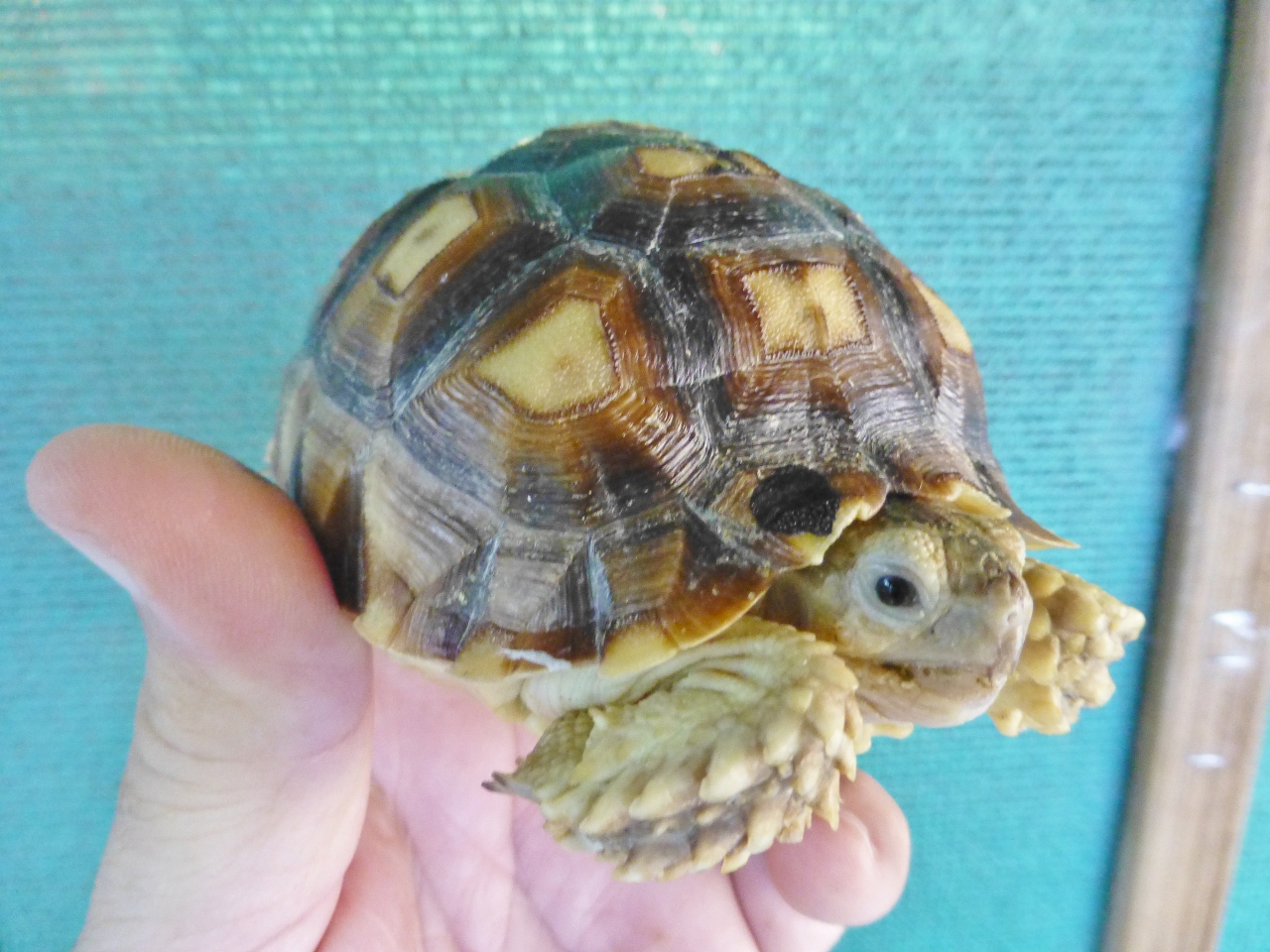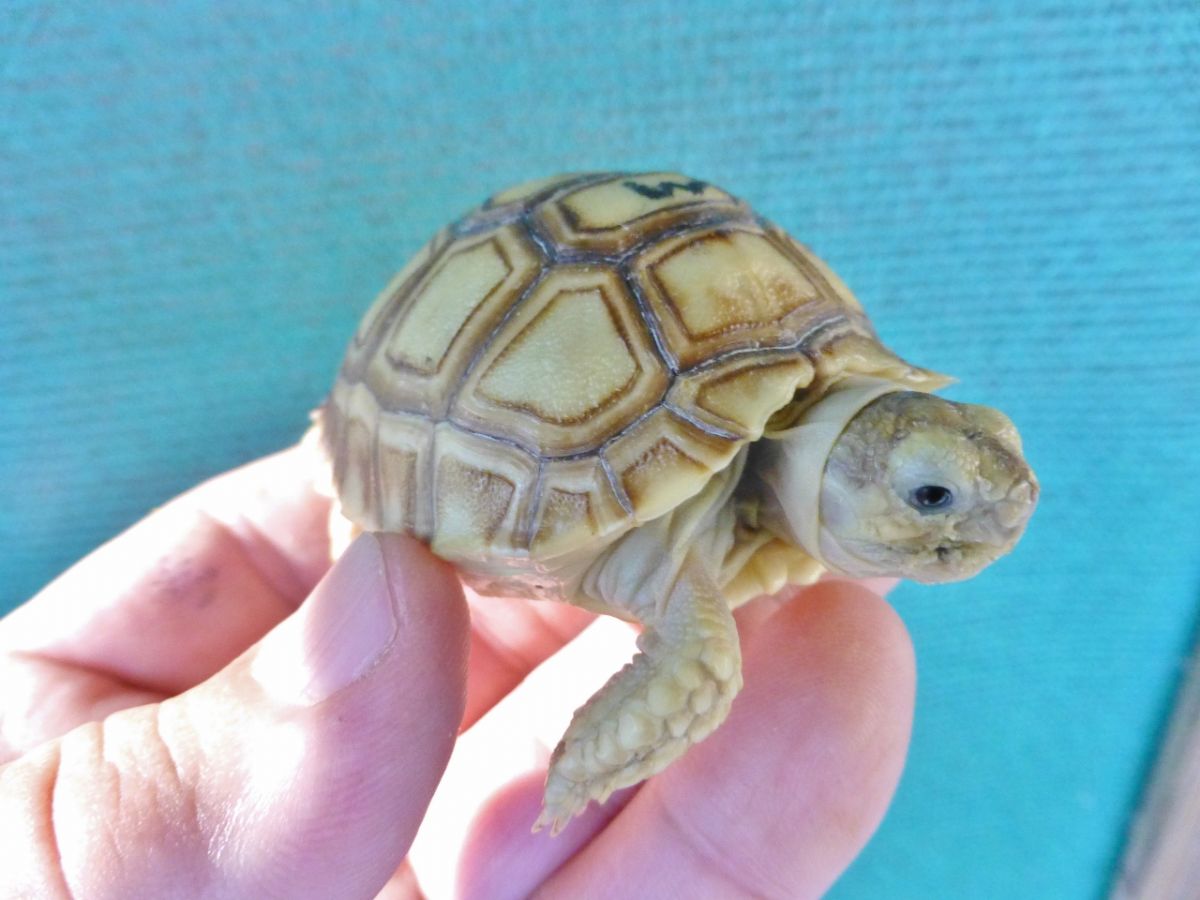In order to display the visual traits of albinism, it requires both genes to be present in an individual. Visual animals show the yellow coloration of the shell and red eyes associated with albinism. "Het" stands for Heterozygous, indicating that the animals have one of the two genes necessary to be visual albinos and display the albino colors. When an animal is a Het, it appears normal and does not exhibit the albino coloration. Hets carry one of the two genes necessary to produce some kind of albino offspring. The offspring of two mated Het animals will produce visual albino animals.For the Sulcata tortoise, there are two types of albinos and one normal variation available. Both albinos come in Het and Visual forms:
If you cross a Het Albino with another Het Albino, you have a 25% chance of producing visual albino offspring. The remaining 75% of the clutch is said to be 66% Het Albino, meaning they all look normal, some are Hets, and some are normal without carrying any albino genes.It's important to note that T+ Albino (Tyrosinase positive) reptiles have a complete lack of melanin, resulting in a white or yellowish appearance, while T- Albino (Tyrosinase negative) reptiles have a complete absence of pigment throughout their skin, scales, and eyes. The genetic mutations causing their albinism differ, with T+ albinos being associated with a mutation in the tyrosinase gene and T- albinos having a mutation in another gene involved in melanin production

